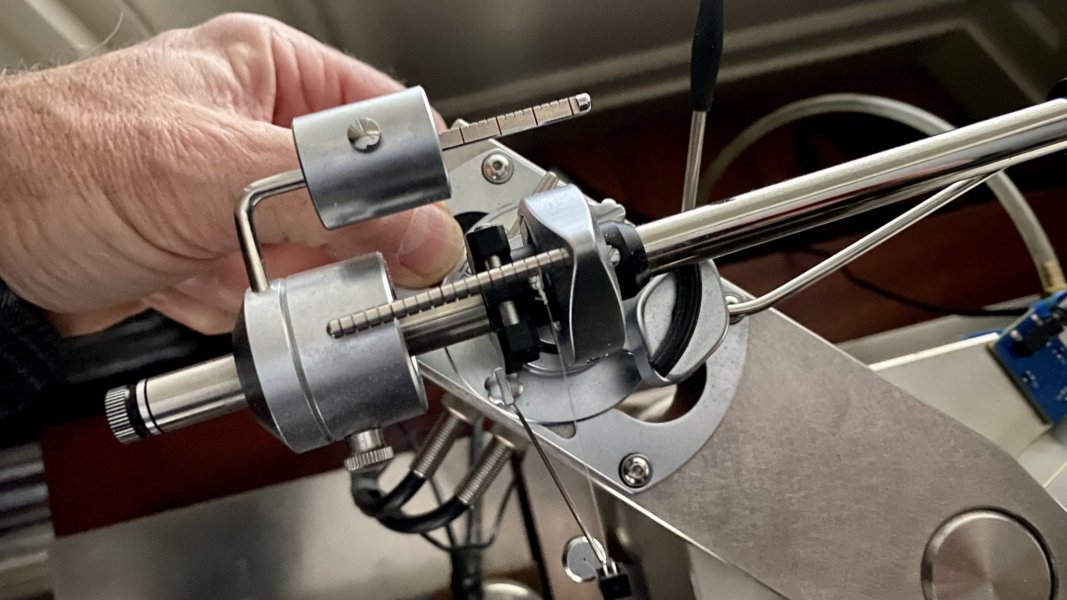As I live with this new system, I continue to improve my listening abilities and learn about audio. A few days ago I played my cherished LP, Johnny Hartman, "Once in Every Life". I noticed a slight distortion in the left channel of a couple of tracks when playing my Ortofon cartridge. To confirm that it was not the LP, I played it with the vdH Colibri and it was fine. I rechecked cartridge set up: zenith, azimuth, anti-skate, VTF and finally alignment. I checked alignment last because I thought it has been spot on. Nothing seemed to make a difference until I got to alignment. It is very hard to see the the stylus in the null point on the protractor, so I use a great little jig from member ddk. It allows one to measure the distance of the stylus from the headshell collar and then to use the jig installed on the arm with the protractor, keeping the cartridge off the table safe and secure. My measurement must have been slightly off, or I was not lining things up properly.
On 99% of the recordings, I hear no issues, but on the rare one, sure enough, there is tracking distortion. The jig and protractor looked fine, but I must have not read the distances precisely enough. I decided to try something different. I simply loosened the set screws on the sliding base of the SME tonearm and moved it backward very, very slightly, a fraction of a millimeter. I listened and it did not improve. It was the wrong direction. I then loosened the set screws again and moved the sled forward just a tad. This time, the sound improved and the distortion was gone.
The LP sounded glorious and I listened to some other recordings which all seems to sound better, more natural. If I were to describe it more specifically, the improvements were in tone, dynamics and presence (Jim Smith). Images were more solid. The instruments and singers seemed more physical in space in front of me. Bass strings became more flabby, wood tone more convincing, and the room more alive with huge amounts of energy - all this from a tiny, tiny movement of the arm forward in its mounting slot.
I thought I had learned what there is to know about cartridge set up, and what to listen for. I am now realizing that I do not know the limit of what to listen for until I hear it for the first time. The tools I use to set up the cartridge are great, but they are best used as a starting point, to get one close. The real work is trying to go beyond that. The magic is in the fine tuning by ear. This system's resolving ability and having now lived with the sound daily for over eighteen months, allows me to hear these very subtle differences. The result however, as many of you have learned for yourselves, can be much greater than expected from such small changes, and well worth the effort.
Once the big pieces are in place, the very fine adjustments to cartridge set up can make a huge difference in the enjoyment of a vinyl based system. Close enough turns out to not be good enough. I am learning how much I do not know and how the tools, as useful as they are, are just a starting point. Adjusting by ear seem for me to be the best way to improve the sound even further.
Here is a photo of me using my fingernail to very slightly move the SME armbase forward in its mounting slot. It made all the difference.



